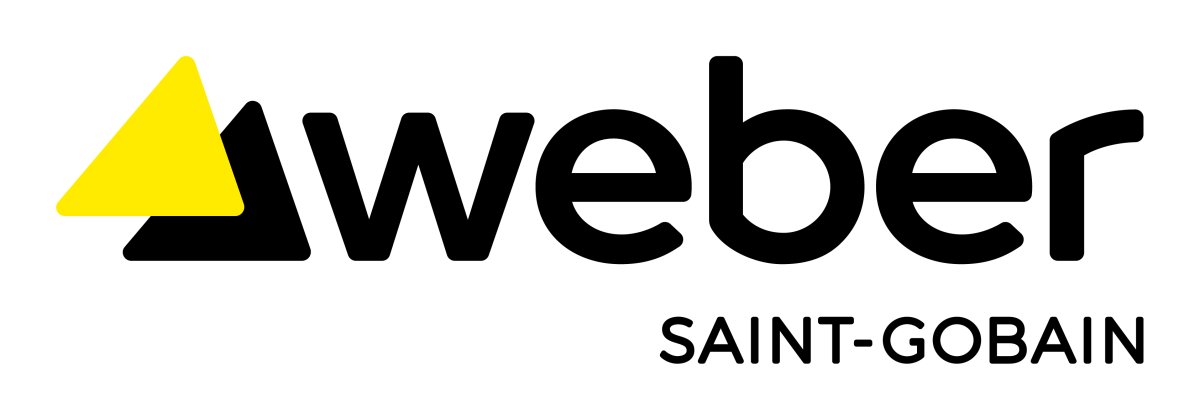في تكنو ايكو
ندرك تماماً مدى خطورة المشاكل التي تصيب الخرسانة وتأثيرها المباشر على سلامة المنشآت واستدامتها. لذلك، نعتمد على منهجية تشخيص دقيقة ولامحدودة في القدرات الفنية، تمكننا من الكشف المبكر والشامل لجميع أبعاد المشكلة من الناحية الميكانيكية والكيميائية والبيئية، بما لا يترك مجالاً للشك أو الهفوة.
نعمل بتكامل تام مع مختبرات فنية متخصصة تمتلك أحدث الأجهزة والتقنيات العالمية، مما يعزز دقة تحاليلنا ويدعم تقديم حلول هندسية متطورة ومصممة خصيصاً لكل حالة. نضمن بذلك استراتيجيات علاجية متقدمة تراعي خصوصية كل مشروع وتحقق أعلى معايير الأمان والجودة، حفاظاً على استمرارية المنشآت وسلامة مستخدميها
In techno eco
We fully recognize the critical nature of concrete deterioration and its direct impact on the safety and longevity of structures. Therefore, we employ an exhaustive and highly advanced diagnostic methodology that allows us to detect all mechanical, chemical, and environmental aspects of the issue early and comprehensively, leaving no room for doubt or oversight.
Our work is conducted in full collaboration with specialized technical laboratories equipped with state-of-the-art global technologies, which enhances the accuracy of our analyses and supports the delivery of tailored, innovative engineering solutions. This ensures advanced remedial strategies that respect the unique requirements of each project while upholding the highest standards of safety and quality, thereby safeguarding structural integrity and user safety.
أهمية التخصص الدقيق في اختيار وتطبيق المواد الأسمنتية لإصلاح الخرسانة
The Critical Importance of Specialized Selection and Application of Cementitious Materials for Concrete Repair
تتميز المواد الأسمنتية المستخدمة في إصلاح الخرسانة بمواصفات فنية دقيقة تختلف تبعاً لطبيعة الخرسانة، نوع الأضرار، الظروف البيئية المحيطة، ومتطلبات المشروع الهندسية. إن سوء اختيار أو تطبيق مادة غير ملائمة يؤدي إلى تدهور مبكر، ضعف في المتانة، وفشل النظام الإصلاحي بالكامل
وفقًا لتقرير الصادر عن المعهد الأمريكي للخرسانة
ACI 546R-14 (American Concrete Institute)، فإن استخدام المضافات المقاومة للماء أو مواد العزل في بيئات تتعرض لإجهادات ميكانيكية عالية دون دراسة تحليلية دقيقة قد يؤدي إلى ضعف التماسك وتقليل العمر الافتراضي للخرسانة.
Cementitious repair materials possess precise technical specifications that vary depending on the concrete type, damage nature, surrounding environmental conditions, and project requirements. Improper selection or application of unsuitable materials leads to premature deterioration, reduced durability, and failure of the repair system.
According to ACI 546R-14 by the American Concrete Institute, the use of water-repellent additives or sealants in environments subjected to high mechanical stress without thorough analytical study may weaken bonding and shorten the concrete’s service life.
الأخطاء الشائعة في استخدام المواد الأسمنتية وطلاءات الحماية
تشير دراسات منشورة في مجلات مرموقة مثل
Construction and Building Materials و*Materials and Structures
- استخدام مواد إصلاح أسمنتية عامة دون تقييم متخصص لحالة الخرسانة وظروفها، مما ينتج عنه عدم توافق كيميائي وفيزيائي وفشل في الإصلاح.
- تطبيق طلاءات حماية غير مناسبة للبيئة أو طبيعة الاستخدام، مثل استخدام طلاءات مقاومة للرطوبة في مناطق تحمل إجهادات ميكانيكية أو تعرض كيميائي، مما يسبب تقشر الطلاء وفقدان فعاليته.
- إهمال التحليل المعملي الدقيق لحالة الخرسانة قبل اختيار المواد، ما يؤدي إلى حلول إصلاحية غير فعالة وزيادة في تدهور الهيكل.
Common Mistakes in Using Cementitious Materials and Protective Coatings
Studies published in reputable journals such as Construction and Building Materials and Materials and Structures highlight frequent errors, including:
- Utilizing general-purpose cementitious repair materials without specialized assessment of the concrete’s condition and environment, resulting in chemical and physical incompatibility and repair failure.
- Applying protective coatings unsuitable for the intended environment or use, e.g., moisture-resistant coatings in mechanically or chemically stressed areas, leading to coating delamination and loss of protection.
- Neglecting detailed laboratory analysis before material selection, causing ineffective repairs and accelerated structural degradation.
خصوصية بيئة سلطنة عمان وتأثيرها على اختيار المواد
تُظهر الدراسات المحلية أن ظروف المناخ في سلطنة عمان تتميز بدرجات حرارة مرتفعة ورطوبة متغيرة، مع وجود مرتفع لمركبات الكبريتات والشوائب في الرمال ومياه الخلط المستخدمة، مما يعزز مخاطر التآكل الكيميائي والفيزيائي للخرسانة.
وفقًا لتقرير هيئة البيئة العمانية (2022)، تتجاوز نسبة الكبريتات في المواد المحلية المستخدمة في البناء المعايير الدولية بنسبة تصل إلى 15-20%، مما يستوجب اختيار مواد إصلاح وطلاءات متخصصة قادرة على تحمل هذه الظروف بكفاءة عالية.
Oman’s Environmental Specificity and Its Impact on Material Selection
Local studies show that Oman’s climate is characterized by high temperatures and variable humidity, combined with elevated levels of sulfates and impurities in local sand and mixing water, increasing chemical and physical degradation risks to concrete.
The Oman Environment Authority (2022) reports sulfate concentrations in local construction materials exceeding international standards by 15-20%, necessitating the use of specialized repair materials and coatings capable of withstanding these harsh conditions efficiently.
الدراسات العلمية والدليل الإرشادي
تؤكد الأبحاث العلمية ضرورة إجراء تحاليل معمليّة دقيقة تشمل تقييم النفاذية، التحليل الكيميائي، واختبارات المقاومة الميكانيكية لضمان توافق المواد الإصلاحية مع خصائص الخرسانة المتضررة والبيئة المحيطة (انظر: ACI 546R-14، RILEM TC 235-CTC).
كما تحث التوصيات الصادرة عن المختبرات الفنية المتخصصة على ضرورة التعاون الوثيق بين المهندسين والمختصين لاختيار الحلول المثلى التي تحقق متانة وديمومة الهيكل الخرساني.
Scientific Studies and Guideline Evidence
Scientific research stresses the necessity of rigorous laboratory tests, including permeability assessment, chemical analysis, and mechanical resistance tests, to ensure compatibility of repair materials with the damaged concrete properties and the environment (see: ACI 546R-14, RILEM TC 235-CTC).
Recommendations from specialized technical laboratories emphasize close collaboration between engineers and experts to select optimal solutions that ensure the structural durability and longevity of concrete assets.
بيانات إحصائية داعمة
- تشير دراسات محلية إلى أن أكثر من 30% من حالات إصلاح الخرسانة في المناطق الساحلية بسلطنة عمان تفشل خلال أول خمس سنوات نتيجة سوء اختيار المواد وعدم ملاءمتها للبيئة.
- تؤكد تقارير عالمية مثل European Federation of Concrete Repair Associations أن الالتزام بالمعايير المتخصصة في اختيار المواد يزيد من عمر الإصلاح بنسبة تصل إلى 40% مقارنة بالاستخدام العشوائي.
Supporting Statistical Data
- Local studies indicate that over 30% of concrete repairs in Oman’s coastal regions fail within five years due to improper material selection and environmental incompatibility.
- Global reports such as those from the European Federation of Concrete Repair Associations confirm that adherence to specialized material selection standards can extend repair lifespan by up to 40% compared to random application.
تكنو ايكو
إن التخصص الدقيق في اختيار وتطبيق المواد الأسمنتية وطلاءات الحماية يُعد عاملاً حيوياً لنجاح واستدامة عمليات إصلاح الخرسانة، ويجب أن يستند إلى أسس علمية دقيقة مدعومة بأحدث الدراسات العالمية، مع مراعاة خصوصية الظروف المناخية والبيئية المحلية، بالإضافة إلى إجراء تقييم معملي شامل وتعاون وثيق مع المختبرات الفنية المتخصصة لتحقيق أعلى معايير الجودة والسلامة الهندسية.
Techno eco
Precise specialization in the selection and application of cementitious repair materials and protective coatings is vital to the success and durability of concrete repairs. This process must rely on rigorous scientific principles, supported by the latest global research, while considering local climatic and environmental particularities. Comprehensive laboratory evaluations and close cooperation with specialized technical laboratories are essential to achieving the highest standards of quality and structural safety.
المشكلات الشائعة في الخرسانة وأسبابها الفنية
Common Concrete Problems and Their Technical Causes
1. الانكماش أثناء الجفاف (Plastic Shrinkage Cracks)
- الوصف: تحدث هذه التشققات نتيجة فقدان الماء السطحي بسرعة كبيرة أثناء المراحل الأولى بعد الصب.
- الأسباب: ارتفاع درجة الحرارة، انخفاض الرطوبة النسبية، الرياح القوية، وعدم المعالجة المبكرة.
- الخصائص: تشققات ضحلة، عشوائية، بعمق أقل من 3 ملم.
- الحلول:
- تطبيق المعالجة المبكرة بالماء أو مركبات المعالجة.
- استخدام مثبتات التبخر.
- تقليل الصب في ظروف جوية قاسية.
Description: These cracks occur due to rapid surface water loss in the early hours after pouring.
Causes: High temperature, low humidity, wind, and lack of early curing.
Characteristics: Shallow, random cracks usually less than 3 mm deep.
Solutions:
- Early water curing or curing compounds.
- Use of evaporation retarders.
- Avoid pouring in extreme weather.
2. التحميل الزائد (Overloading Cracks)
- الوصف: تنتج هذه التشققات عن تعرّض الخرسانة لأحمال تتجاوز قدرتها، خاصة قبل اكتمال تصلبها.
الخصائص: تشققات عميقة، غالباً عرضية أو موازية لاتجاه الحمل.
- الحلول:
- ضمان فترة المعالجة الكاملة قبل تحميل العناصر.
- تدعيم العناصر التالفة أو حقنها بالإيبوكسي.
Description: Cracks resulting from loads exceeding the structural design, particularly before full curing.
Characteristics: Deep, structural cracks—transverse or longitudinal.
Solutions:
- Allow full curing before loading.
- Structural reinforcement or epoxy injection.
---
3. التمدد والانكماش الحراري (Thermal Cracking)
- الوصف: تحدث نتيجة اختلاف درجات الحرارة داخل الكتلة الخرسانية أو بينها وبين الجو الخارجي.
- الخصائص: تشققات عرضية أو متعرجة تظهر في الكتل الكبيرة أو الفواصل.
- الحلول:
- إدخال فواصل التمدد الحراري في التصميم.
- استخدام إضافات مقللة للحرارة.
- صب الخرسانة في درجات حرارة معتدلة.
Description: Cracks caused by thermal gradients within the concrete or between concrete and ambient temperature.
Characteristics: Transverse or irregular cracks, often in large sections or near joints.
Solutions:
- Include expansion joints in design.
- Use low-heat cement or additives.
- Pour in moderate temperatures.
4. عيوب التصميم والتنفيذ (Design & Workmanship Deficiencies)
- الوصف: نتيجة خلل في نسب الخلطة، ضعف التسليح، أو غياب فواصل التحكم.
- الخصائص: تشققات غير منتظمة قد تكون منتشرة في عدة مناطق.
- الحلول:
- تحسين تصميم الخلطة وتوزيع التسليح.
- تنفيذ فواصل انكماش مناسبة.
- الالتزام بإجراءات الجودة في التنفيذ.
Description: Caused by poor mix design, weak reinforcement, or missing control joints.
Characteristics: Irregular, scattered cracks affecting durability.
Solutions:
- Optimize mix design and reinforcement layout.
- Provide proper control joints.
- Ensure strict quality control on site.
---
التمييز بين أنواع التشققات
Distinguishing Crack Types
| النوع | السمات | التأثير |
|------|--------|----------|
| انكماش الجفاف | ضحلة، عشوائية، سطحية | تأثير بصري ومحدود وظيفياً |
| التحميل الزائد | عميقة، موجهة مع اتجاه القوى | تؤثر على السلامة الهيكلية |
| التمدد الحراري | عرضية، بمواقع تغير حراري | قد تؤثر على استقرار المقطع |
| عيوب التصميم | غير منتظمة، متعددة | خطر على المدى البعيد |
Distinguishing Crack Types
التمييز بين أنواع التشققات
| Type | Characteristics | Impact |
|--------------------|---------------------------------------------|----------------------------------------|
| Plastic Shrinkage | Shallow, random, surface-level | Mostly aesthetic; minimal structural effect |
| Overloading | Deep, aligned with load direction | Compromises structural integrity |
| Thermal Cracking | Transverse, in areas with thermal variation | May affect section stability |
| Design Deficiencies| Irregular, scattered | Long-term durability risk |
أسباب تسرب المياه في الخرسانة نتيجة خلل بالخلطة
1. عدم تجانس الخلط: توزيع غير منتظم للمكونات يسبب مناطق ضعف وتعشيش، تسمح بنفاذ الماء.
2. ماء خلط غير مطابق: مياه ملوثة أو مالحة تؤدي لتفاعلات تضعف البنية.
3. رداءة المواد الخام: مثل الأسمنت المتدهور أو الرمل غير المغسول، ما يقلل الكثافة ويزيد النفاذية.
4. ضعف الدمك (الاهتزاز): بقاء فراغات هوائية غير معالجة يفتح مسارات للتسرب.
---
Causes of Water Leakage Due to Concrete Mix Defects
1. Poor mixing uniformity: Uneven distribution causes weak zones and honeycombing, increasing permeability.
2. Unsuitable mixing water: Contaminated or saline water initiates reactions that degrade the matrix.
3. Low-quality raw materials: Expired cement or dirty sand reduces density and increases porosity.
4. Inadequate compaction: Air voids remain uneliminated, facilitating water ingress.
---
الانفصال الحبيبي والتعشيش في الخرسانة
- الانفصال الحبيبي (Segregation)
هو خلل يحدث نتيجة سوء التصميم أو التنفيذ، ويتجلى في انفصال مكونات الخلطة الخرسانية عن بعضها (الركام، العجينة الأسمنتية، الماء)، ويؤدي إلى ترسيب الركام الكبير وارتفاع الماء إلى السطح. ينتج عن ذلك فقدان التجانس، ضعف في المقاومة، وزيادة النفاذية.
- التعشيش (Honeycombing)
هو ظهور فراغات أو فجوات ضمن الكتلة الخرسانية، غالبًا بسبب عدم كفاءة الدمك أو كثافة التسليح أو جفاف الخلطة. يسبب انخفاض الكثافة والمتانة، ويزيد من احتمالية التآكل وتسرب الماء.
---
Segregation and Honeycombing in Concrete
- Segregation
A defect resulting from poor mix proportioning, inadequate mixing, or improper placing. It causes separation of components, where coarse aggregates sink and water rises. This compromises the uniformity, reduces compressive strength, and increases permeability.
- Honeycombing
Characterized by visible voids or cavities in the concrete mass, typically due to insufficient compaction, excessive reinforcement congestion, or a stiff mix. It leads to reduced density, mechanical strength, and long-term durability.
الكربنه
الكربنة في الخرسانة هي عملية كيميائية بطيئة تتفاعل فيها ثاني أكسيد الكربون (CO₂) من الجو مع هيدروكسيد الكالسيوم في الخرسانة، مما يؤدي إلى انخفاض القلوية (pH) بمرور الوقت. عند وصول جبهة الكربنة إلى حديد التسليح، تفقد البيئة القلوية قدرتها على حمايته، ويبدأ التآكل عند توفر الرطوبة والأكسجين. لا تحدث الكربنة فورًا، بل تتطور تدريجيًا خلال سنوات، ويعتمد معدلها على نفاذية الخرسانة، سمك الغطاء الخرساني، والرطوبة المحيطة.
---
Carbonation in concrete is a slow chemical process in which atmospheric carbon dioxide (CO₂) reacts with calcium hydroxide in the concrete matrix, gradually reducing the pH. Once the carbonation front reaches the steel reinforcement, the protective alkaline environment is compromised, and corrosion may begin in the presence of moisture and oxygen. Carbonation does not occur immediately; it develops over several years, depending on concrete permeability, cover thickness, and environmental conditions.
تفاعل القلوي-سيليكا (ASR) هو تفاعل كيميائي ضار يحدث بين هيدروكسيدات القلويات (Na⁺، K⁺) الموجودة في الأسمنت وبعض أنواع الركام النشط المحتوي على السيليكا غير المتبلورة (مثل الأوبال أو الشيرت)، وذلك في وجود رطوبة كافية.
ينتج عن هذا التفاعل جل هلامي يتمدد بامتصاص الماء، مما يولد ضغوطًا داخلية تؤدي إلى تشققات عشوائية وتدهور تدريجي في بنية الخرسانة.
يُعد هذا التفاعل من الآليات البطيئة، حيث قد تبدأ الأعراض بالظهور بعد عدة سنوات من عمر المنشأ، ويؤثر سلبًا على المتانة طويلة الأجل والاستقرار الإنشائي.
---
Alkali-Silica Reaction (ASR) is a deleterious chemical reaction between the alkali hydroxides (Na⁺, K⁺) in Portland cement and reactive forms of amorphous silica in certain aggregates (such as opal or chert), in the presence of sufficient moisture.
This reaction forms an expansive gel that absorbs water and swells, creating internal stresses that lead to random cracking and gradual deterioration of the concrete matrix.
ASR is a slow-developing phenomenon, with signs often emerging years after construction, posing a significant threat to the long-term durability and structural integrity of concrete.
التآكل الكيميائي في الخرسانة (Chemical Degradation of Concrete):
يُعد التآكل الكيميائي من أهم عوامل تدهور الخرسانة التي تنجم عن تفاعل مواد ضارة مثل الأحماض والكبريتات مع مكونات المصفوفة الخرسانية. تدخل هذه المواد من مصادر بيئية وصناعية متعددة عبر مسام الخرسانة، وتتسبب في تحلل وتركيب غير مستقر للمعادن الإسمنتية.
- الأحماض: تنشأ أساسًا من مياه الأمطار الحمضية نتيجة انبعاثات غازات الكبريت وأكسيد النيتروجين في الجو، وكذلك من مياه الصرف الصناعي، وتهاجم الأحماض مركبات هيدروكسيد الكالسيوم، مما يؤدي إلى إذابة المونة وتقليل الترابط الداخلي، ويُضعف الهيكل العام للخرسانة.
- الكبريتات: موجودة في التربة والمياه المحتوية على كبريتات، تتفاعل مع هيدرات الأسمنت مكونة مركبات متوسعة (مثل الإتريغيت)، مما يُحدث إجهادات داخلية تؤدي إلى تشققات وانفصال في الخرسانة، مع خسارة تدريجية في المتانة والصلابة.
تفاعل هذه العوامل الكيميائية يسبب تغييرات ميكروهيكلية تؤدي إلى زيادة المسامية، ضعف التماسك، وتدهور الخصائص الميكانيكية، مما يعجل من تدهور الخرسانة ويقلل من عمرها الافتراضي.
تقييم مقاومة الخرسانة لهذا النوع من الهجوم يتطلب فحصاً دقيقاً لتركيز الملوثات الكيميائية، نوعية المواد الداخلة في الخلطة الخرسانية، نسب الماء إلى الأسمنت، وجود مواد مضافة مقاومة للتآكل، إضافة إلى ظروف البيئة المحيطة.---
Chemical Degradation of Concrete:
Concrete undergoes chemical degradation when aggressive agents such as acids and sulfates penetrate its porous matrix. These deleterious substances typically originate from various environmental and industrial sources:
- Acids: Present in acid rain formed from atmospheric pollution, industrial effluents, and contaminated groundwater, acids react with calcium hydroxide and other cementitious compounds, leading to dissolution and loss of structural cohesion.
- Sulfates: Commonly found in sulfate-rich soils, wastewater, and seawater, sulfates chemically interact with cement hydrates forming expansive products like ettringite. This causes internal stresses, microcracking, and progressive structural deterioration.
The complexity of these chemical interactions results in the breakdown of the cementitious matrix, reduction in compressive and tensile strength, and increased porosity. This accelerates ingress of harmful agents, thereby amplifying concrete degradation over time.
Accurate assessment of chemical attack resistance requires analysis of the aggressor types and concentrations, alongside concrete mix design parameters such as water-to-cement ratio, mixing quality, and the inclusion of corrosion inhibitors or supplementary cementitious materials.
تآكل حديد التسليح | Rebar Corrosion
يُعد تآكل حديد التسليح من أخطر آفات الخرسانة المسلحة، كونه يؤثر مباشرة على كفاءة العنصر الإنشائي وسلامته على المدى الطويل. يحدث هذا التآكل نتيجة اختراق الملوثات (كالكلوريدات أو ثاني أكسيد الكربون) لطبقة الغطاء الخرساني، مما يؤدي إلى تدمير الطبقة السلبية (Passive Layer) المحيطة بحديد التسليح.
عند زوال هذه الطبقة، يتفاعل الحديد مع الرطوبة والأكسجين مكوّناً الصدأ (أكسيد الحديد)، والذي يتمدد حجمه بشكل كبير مقارنة بالحديد الأصلي، مسببًا إجهادات داخلية تؤدي إلى تشقق الغطاء الخرساني وانفصاله، وبالتالي تقليل الترابط بين الحديد والخرسانة وتدهور أداء العنصر الإنشائي.
تمييزه عن الكربنة:
رغم أن الكربنة تعتبر من مسببات التآكل، إلا أن تآكل الحديد هو مرحلة أكثر تقدمًا وأشد خطرًا. فبينما تؤدي الكربنة إلى خفض قلوية الخرسانة، فإن التآكل يُعد النتيجة الإنشائية الناتجة عن تعرّض التسليح لبيئة عدوانية.













.png)